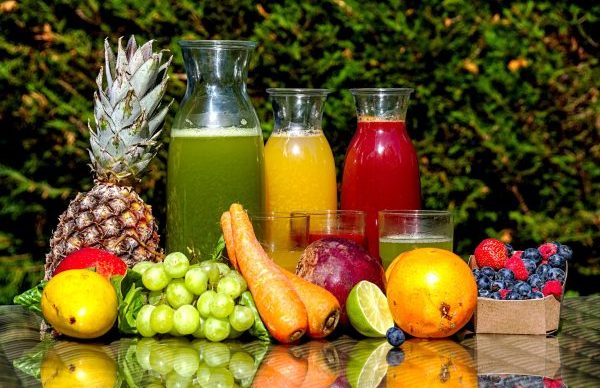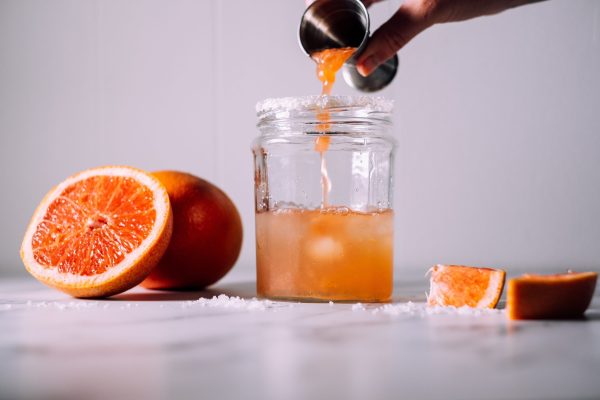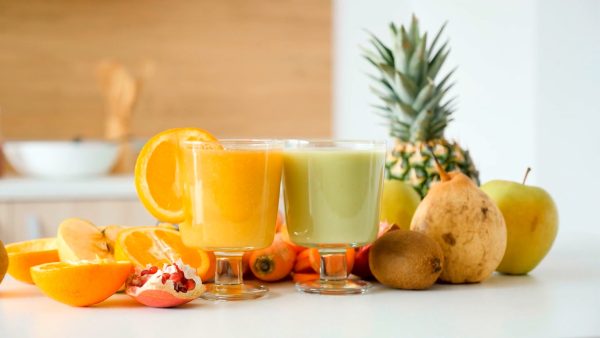In most of the bars and restaurants I’ve worked, there have always been conversations about whether we should use fresh squeezed juices in our beverage program or purchase pasteurized juices.
I’ll be completely honest and say I’ve used both. There are benefits and drawbacks to both types of juice; but in this post, we will focus on taste and will take a closer look at the sugar and acid levels of each.

Photo by Zlatko Duric via www.unsplash.com
WHAT IS PASTEURIZATION?
Named after the 19th century French chemist, Louis Pasteur, the pasteurization process consists of heating up a liquid (such as milk, either to drink or for dairy products) in order to kill harmful bacteria.
While raw milk is an unpasteurized favorite at health food stores, and soft cheeses like Brie and goat cheese are sometimes made with unpasteurized milk, these can pose a health risk– especially to pregnant women.

Photo by Aleksey Melkomukov via www.unsplash.com
Although milk is probably the most common product to go through the process of pasteurization, it certainly isn’t the only one. And it’s not what we’re focused on today since we’re talking about mixers for cocktails, after all. Orange juice, apple juice, and vegetable juices (just to name a few) from grocery stores can all be pasteurized.
It’s certainly recommended to drink pasteurized milk because of pathogenic bacteria, though that’s not necessarily the case with juice. But is pasteurized juice bad for you? Of course, there are benefits and drawbacks, like with pretty much anything.

Photo by Rinck Content Studio via www.unsplash.com
Benefits of Pasteurizing Fruit Juice:
- Pasteurization can kill dangerous bacteria.
- Pasteurized juice has a longer shelf life.
Cons of Pasteurization:
- The finished product is missing essential vitamins like vitamin C, taking away some health benefits.
- Many bartenders and consumers agree that fresh-squeezed juice simply tastes better (think of juice you’ve gotten at a farmers market vs bottles juice you’ve bought at a store).
- Untreated juices spoil more quickly.
Basically, when you take fresh fruit and squeeze it into untreated, raw juice, this is unpasteurized juice. Think “fresh-squeezed.” And since there are numerous health benefits of juice that is fresh– and it doesn’t contain the same bad bacteria that milk products do– food safety is not as much a concern when working with juice, and the benefits of pasteurization don’t necessarily add up.
THE EXPERIMENT
For our purposes today, though, I really wanted to compare the acidity and sugar content of juices side-by-side. With craft cocktails, taste is super important. So let’s compare!
I used fresh-squeezed lime juice and a store-bought version to compare.
THE TOOLS:
- pH Meter for acidity
- Refractometer for sugar levels
TEST RESULTS

1. SUGAR CONTENT
According to the refractometer, there was very little measurable difference between the sugar content of the raw juice (8.3% brix) vs pasteurized lime juice (8.1% brix).
2. PH LEVEL
The pH meter measured a .23 difference between the pH of pasteurized lime juice and fresh lime juice, with fresh lime juice being more acidic. So along with having extra vitamins, the fresh version also retains more acid.

Copyright A Bar Above
TASTE TEST
This is the test that really matters for our guests. How do they compare in cocktails?
In order to do a true comparison– for science, of course– I made two margaritas and tasted them next to each other.
The margarita with fresh lime juice had a bright, focused acidity and vegetal, citrus aromas that I always associate with lime juice.
The margarita containing pasteurized lime juice was much sweeter than the fresh lime juice margarita, even though I used the same exact recipe. The fact that the pasteurized lime juice contained less acid may be the reason for this.
The bright acidity that was present in the fresh lime juice became softer and duller. The aroma was very different as well, with the fresh vegetal notes being replaced by bitter, oxidized citrus notes.

Photo via www.unsplash.com
CANNED JUICE VS FRESH-SQUEEZED RAW JUICE
There’s no doubt in my mind that fresh is always the best, but pasteurized juice is definitely a step up from the sweet and sour mix that is used behind most bars. When making the choice between fresh juice and pasteurized juices, make sure to taste them side-by-side in a cocktail. After all, this is what you will be serving your guests!
So what do you think? Let us know in the comments if you prefer fresh fruit juices. We’d love to see what cocktails you make with your delicious juice– whether pasteurized or not!




This is really good to know. Whenever I can, I’ll strive to use fresh juice. I have had good results with adding a tiny amount of citric acid, but I can’t replace the lost smell.
That’s a great tip on the citric acid. I like to express fresh citrus oil across any cocktail that uses juice to help reinforce the flavor already in the cocktail. That fresh layer of oil amplifies the aroma and there are some bartenders that like to add the oil to the outside of the glass where the customer handles the cocktail.
This seems like a great idea as the body heat will help to make the citrus oil much more aromatic.
No, it has nothing to do with using the juice in mixed drinks for some. Just a question, is unpasteurized or pasteurized orange or other juice better. Orange juice is more than tart enough, so less acid isn’t bad.